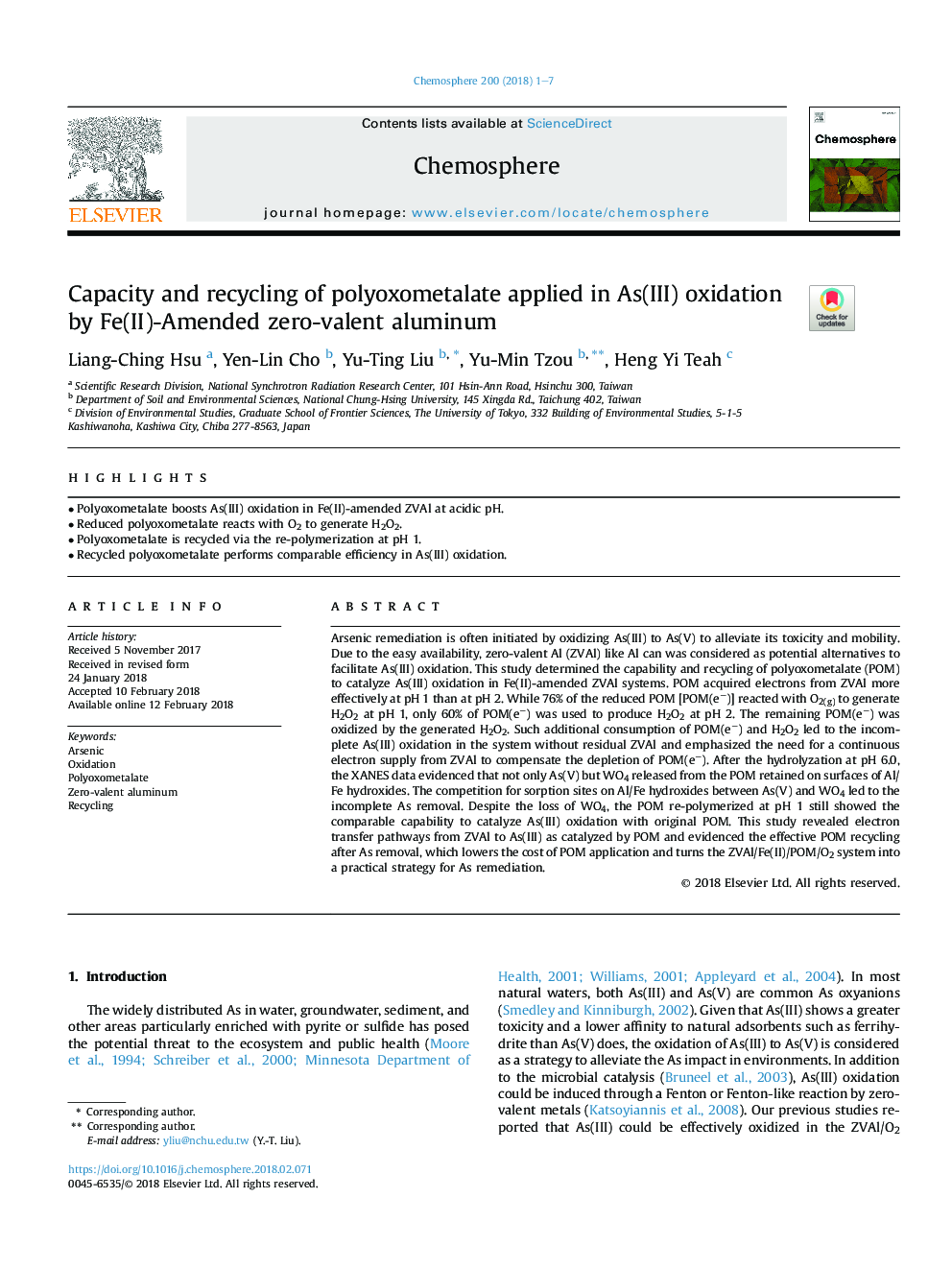| Article ID | Journal | Published Year | Pages | File Type |
|---|---|---|---|---|
| 8851815 | Chemosphere | 2018 | 7 Pages |
Abstract
Arsenic remediation is often initiated by oxidizing As(III) to As(V) to alleviate its toxicity and mobility. Due to the easy availability, zero-valent Al (ZVAl) like Al can was considered as potential alternatives to facilitate As(III) oxidation. This study determined the capability and recycling of polyoxometalate (POM) to catalyze As(III) oxidation in Fe(II)-amended ZVAl systems. POM acquired electrons from ZVAl more effectively at pH 1 than at pH 2. While 76% of the reduced POM [POM(eâ)] reacted with O2(g) to generate H2O2 at pH 1, only 60% of POM(eâ) was used to produce H2O2 at pH 2. The remaining POM(eâ) was oxidized by the generated H2O2. Such additional consumption of POM(eâ) and H2O2 led to the incomplete As(III) oxidation in the system without residual ZVAl and emphasized the need for a continuous electron supply from ZVAl to compensate the depletion of POM(eâ). After the hydrolyzation at pH 6.0, the XANES data evidenced that not only As(V) but WO4 released from the POM retained on surfaces of Al/Fe hydroxides. The competition for sorption sites on Al/Fe hydroxides between As(V) and WO4 led to the incomplete As removal. Despite the loss of WO4, the POM re-polymerized at pH 1 still showed the comparable capability to catalyze As(III) oxidation with original POM. This study revealed electron transfer pathways from ZVAl to As(III) as catalyzed by POM and evidenced the effective POM recycling after As removal, which lowers the cost of POM application and turns the ZVAl/Fe(II)/POM/O2 system into a practical strategy for As remediation.
Related Topics
Life Sciences
Environmental Science
Environmental Chemistry
Authors
Liang-Ching Hsu, Yen-Lin Cho, Yu-Ting Liu, Yu-Min Tzou, Heng Yi Teah,
